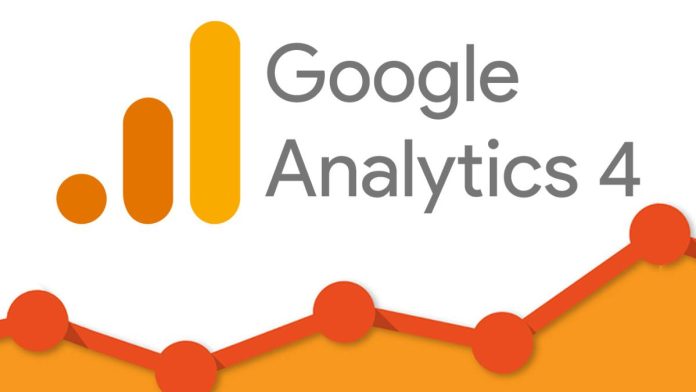As Universal Analytics (UA) is set to shut down on July 1, 2023, businesses are now faced with the need to transition and familiarize themselves with Google Analytics 4 (GA4). To ensure a smooth shift, it is crucial to have GA4 properly set up, including functioning conversion tracking, and to gain proficiency in utilizing the new interface, event data types, and other features. Read this article to equip yourself with the knowledge and skills required to keep your campaigns on track in the GA4 era.
Guide to Reading Reports in Google Analytics 4: A Comprehensive Overview
Google Analytics 4 (GA4) represents the latest iteration of Google Analytics, offering an array of fresh features and capabilities. Notably, GA4 introduces a restructured approach to reports. Unlike the previous version, Universal Analytics, which relied on a hierarchical system of tabs, pages, and sections, GA4 organizes reports into topics, overview reports, and detail reports.
At the highest level of organization, topics encompass broad areas of interest, such as Acquisition, Engagement, Conversions, and Audience.
Overview reports provide a bird’s-eye view of the data within a specific topic. Typically presented through charts and graphs, these reports offer concise summaries of key metrics.
Detail reports, on the other hand, allow users to delve deeper into topic-specific data. Comprising tables and lists, these reports facilitate sorting and filtering for more granular analysis.
To effectively navigate and comprehend reports in GA4, consider the following guidelines:
Browse the report library: Access the report library, which catalogs all available reports within your GA4 property. You can peruse the library by topic, overview report, or detail report, gaining an understanding of the various data sets at your disposal.
Utilize search functionality: Employ the search feature to seek out reports based on specific keywords. This method proves helpful in discovering reports that may have otherwise gone unnoticed.
Create custom reports: Leverage the capability to create custom reports by combining different dimensions and metrics. This empowers you to obtain tailored data that precisely aligns with your analytical needs.
Here are a few tips to enhance your proficiency in reading GA4 reports:
Pay attention to dimensions and metrics: Comprehend the significance of dimensions and metrics in each report. Dimensions categorize data into distinct groups, such as Country, Device, or Page, while metrics quantify specific measurements like Sessions, Pageviews, or Bounce Rate.
Employ filters: Capitalize on filters within reports to refine and narrow down the displayed data. This assists in identifying trends and patterns, providing deeper insights into the information being analyzed.
Export data: When needed, export report data to a CSV file for external use or sharing with others. This facilitates seamless integration with other applications and enables collaborative data analysis.
By following these guidelines and exploring the diverse functionalities of GA4 reports, you can unlock valuable insights and optimize your understanding of crucial analytics data.
Mastering Data Analysis and Utilization in GA4: Key Tips and Strategies
Unlocking the potential of data analysis and utilization in GA4 entails adopting effective techniques. Here are valuable tips to enhance your approach:
Define goals and objectives: Prior to delving into data analysis, establish clear goals and objectives for your business. The focus will enable you to direct your analysis toward the most pertinent data that aligns with your objectives.
Select relevant metrics and dimensions: GA4 offers a wide array of metrics and dimensions. It is crucial to choose the ones that best serve your analysis. Opt for metrics and dimensions that effectively address the questions you seek to answer.
Leverage filters and segments: Employ filters and segments to refine your data and concentrate on specific information of interest. This approach facilitates the identification of trends and patterns that are integral to your analysis.
Create customized reports: If the existing reports in the GA4 library do not fulfill your requirements, take advantage of the option to create customized reports. This empowers you to obtain precise data tailored to your needs.
Facilitate data sharing: Share your findings with others by exporting data to a CSV file or creating custom reports. This collaboration is valuable for working with stakeholders or engaging in data-driven discussions.
Additionally, consider the following tips for optimal data analysis and utilization in GA4:
Utilize analysis tools: GA4 provides a range of analysis tools to make sense of your data. These tools assist in identifying trends, patterns, and outliers, empowering you to derive meaningful insights.
Conduct experiments: Leverage GA4’s experimentation capabilities to test and evaluate changes to your website or app. This valuable approach enables a deeper understanding of how alterations impact users and business outcomes.
Employ data-driven decision-making: Harness the power of GA4’s data to inform and enhance your decision-making processes. Leverage data insights to identify opportunities, optimize marketing campaigns, and monitor progress toward your business goals.
By implementing these tips and strategies, you can maximize the value derived from data analysis and utilization in GA4, enabling informed decision-making and improved business outcomes.
Optimizing GA4 Setup: Essential Steps for a Successful Implementation
To ensure a proper setup of GA4, follow these essential steps:
Create a GA4 property: If you don’t have a GA4 property, create one by navigating to Admin > Properties > Create property.
Add the GA4 tracking code: Incorporate the GA4 tracking code, a JavaScript snippet, into your website or app to start data collection. Access the tracking code in the GA4 Setup Assistant.
Verify tracking code functionality: Confirm that the tracking code is functioning correctly by visiting Admin > Data streams > Web > Preview.
Establish goals and objectives: Once the tracking code is verified, set up goals and objectives aligned with your business objectives. This ensures a focused analysis by identifying key data points.
Commence data collection: With goals and objectives in place, start collecting data. Achieve this by visiting your website or app or by directing traffic from various sources.
Analyze your data: Once a sufficient amount of data is collected, commence analysis. Utilize the GA4 report library to explore pre-built reports or create custom reports to obtain precise data tailored to your needs.
Leverage data for decision-making: Utilize GA4 data to make informed decisions for your business. Identify opportunities, enhance marketing campaigns, and monitor progress toward your goals.
Consider the following additional tips to ensure a well-rounded setup in GA4:
Utilize GA4 documentation: Take advantage of the comprehensive GA4 documentation, which serves as a valuable resource for learning how to set up and effectively utilize GA4.
Engage in the GA4 community: Join the growing community of GA4 users, enabling access to troubleshooting support and insights from experienced practitioners.
Stay updated with changes: GA4 is continually evolving, introducing new changes and updates. Stay informed about the latest advancements to maximize the potential of GA4.
By following these steps and staying engaged with the GA4 community, you can achieve a robust setup, enabling you to harness the full capabilities of GA4 and derive valuable insights for your business.
Key Insights: Analyzing and Leveraging Data in GA4
- Set clear goals and objectives for your business to focus your analysis.
- Choose relevant metrics and dimensions that align with your analysis objectives.
- Utilize filters and segments to narrow down data and extract specific information.
- Create custom reports to obtain precise data tailored to your needs.
- Share data with others by exporting it to a CSV file or creating custom reports for collaboration and stakeholder engagement.
- Utilize GA4’s analysis tools to identify trends, patterns, and outliers in your data.
- Conduct experiments in GA4 to test changes and understand their impact on users and business outcomes.
- Make data-driven decisions by leveraging GA4 data to identify opportunities, improve marketing campaigns, and track progress toward goals.
Conclusion:
Analyzing and utilizing data in GA4 is a critical process for businesses aiming to gain valuable insights and drive informed decision-making. By following best practices and leveraging GA4’s capabilities, businesses can draw meaningful conclusions and maximize the potential of their data. Key takeaways include setting clear goals, selecting relevant metrics and dimensions, employing filters and segments for focused analysis, creating custom reports for tailored insights, and sharing data to foster collaboration. Additionally, utilizing GA4’s analysis tools, running experiments, and making data-driven decisions empower businesses to identify trends, optimize strategies, and track progress toward their objectives. With the ability to harness the power of GA4, businesses can unlock a deeper understanding of their data and unlock opportunities for growth and success.
Read More:
- How To Write Effective SEO Copy For Your Website?
- How to Write your Content Right to Get More Viewers for your Website?
- A Beginner’s Guide to Broken Link Building
- How to Hire a Perfect Digital Marketer for Your Organization?
- The Benefits of Creating a Digital Marketing Funnel for Dentists
- How To Generate Sales And Revenue Using SEO
- Tips to Optimize Your Website for Local SEO
- SEMrush vs Similarweb Tool Comparison
- Top 20 Online Marketing Tools That Will Help You for SEO
- The Benefits of Google My Business for Small Businesses
- SEO Backlink Strategy Guide 2023
- Worldwide Top 25 Dofollow High DA Social Bookmarking Sites






